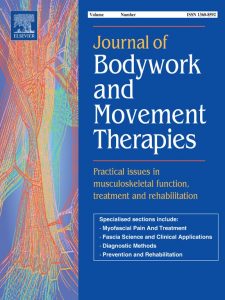Publications

Runners have more latent myofascial trigger point than non-runners in medialis gastrocnemii
Authors: Anh Phong Nguyen 1, 2, 3, Christophe Broy 4, Louise Cardon 1, Gregoire Jet 1, Christine Detrembleur 1, 2, Philippe Mahaudens 1, 2, 5, 6
Affiliations:
- Universite Catholique de Louvain (UCLouvain), Faculte des Sciences de la Motricite, place pierre de coubertin 1, 1348 Louvain La Neuve, Belgium
- Universite Catholique de Louvain (UCLouvain), Institut de Recherche experimentale et clinique, Neuromuscoloskeletal lab, avenue mounier 53, 1200 woluwe-saint-lambert, Brussels, Belgium
- The Running Clinic, lac Beauport, Quebec, Canada
- Kine & Co Formations, 3 rue de Lorraine 57580, Remilly, France
- Cliniques universitaires Saint-Luc, Service d’orthopedie et de traumatologie de l’appareil locomoteur, Avenue Hippocrate 10, B-1200 Brussels, Belgium
- Cliniques universitaires Saint-Luc, Service de medecine physique et readaptation, Avenue Hippocrate 10, B-1200 Brussels, Belgium
Journal: Journal of Bodywork and Movement Therapies - October 2024, Volume 40, Pages 1582-1587 (DOI: 10.1016/j.jbmt.2024.08.016)
-
Field & Applications:
- Sport
- Myofascia
- Injury prevention
Objectives: The goals of this study were to i. describe the prevalence of latent myofascial trigger points (MTrPs) in the medialis gastrocnemius in runners versus non-runners, and ii. examine their level of pain and stiffness.
Methods: Healthy runners and non-runners were recruited. Each participant’s medialis gastrocnemius MTrPs count was recorded in both legs. The mean pain and the most painful MTrPs pain levels were recorded using an algometer, and the stiffness was evaluated using myotonometry (MyotonPRO device) on the most painful MTrP.
Results: With a medium effect size (p=0.001), runners (n=20) showed significantly more latent MTrPs than non-runners (n=26). Runners also reported higher overall pain on the latent MTrPs site than non-runners (p=0.003) and a significant difference (p=0.001) for the most painful latent MTrP. Runners were substantially stiffer than non-runners in the most painful latent MTrP, with a mean stiffness difference of +9.98 N/m (p=0.018, medium effect size).
Conclusions: Runners have a higher number of latent MTrPs than non-runners. The MTrPs found in runners’ legs were more painful and stiff than those found in non-runners’ legs.
Keywords: myofascial trigger point, stiffness, running, epidemiology, running-related-injuries
A greater latent MTrPs prevalence in runners’ GM was found. Runners tend to experience higher pain intensity on the latent MTrPs. Stiffness measured on latent MTrPs spots was higher in the runners’ group. This study is surely the starter of a new interest and understanding of latent MTrPs correlated to running practice by offering novel perspectives on injury prevention and performance management.


